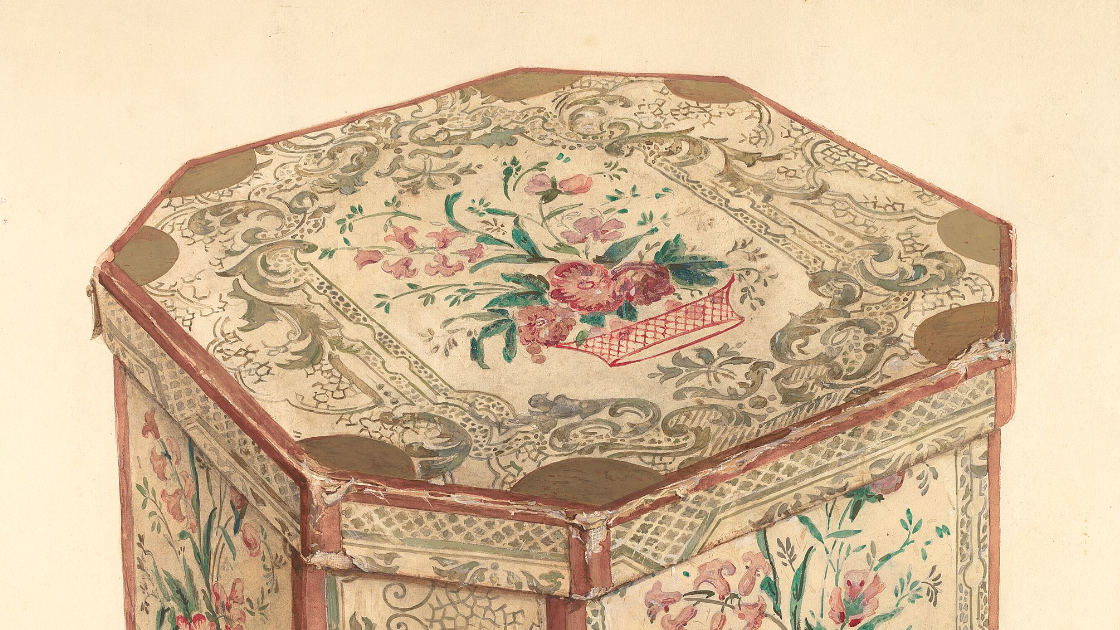Reenactors, historians, and the general public often marvel at the creativity of our historic counterparts. They were able to make from simple tools and equipment ingenious solutions to everyday problems. Imagine us trying to do the same things without Google! Recently, I learned about bandboxes during a training activity.
Bandboxes are a catch-all term for decorative boxes constructed primarily from pasteboard with wallpaper on the outside and newspaper on the inside. For an example, think of hat boxes. (Pasteboard is a thin board made from gluing multiple sheets together. It has the thickness of thin cardboard or watercolor paper.) Wallpaper went on the outside because it is a bit more durable than regular paper to protect against usage and wear. Inside, the newsprint helps protect the contents from insects.
Bandboxes started in the 1500s as a way to keep men and women’s ruffled collars from getting squished. Pretty soon it wasn’t just for collars but for gloves, combs, hats, pins, ribbons, etc. At the beginning, people often made the boxes themselves. Historically, for some women this was their only creative outlet. Bandboxes seemed to reach their height of popularity during the 17th through the 19th century. The Victorians particularly liked having a box for every purpose.
In America, perhaps the best known bandboxes were made by Hannah Davis. She began making bandboxes after her parents died in 1818. She used wood instead of pasteboard. Davis sold her boxes to the girls who worked in the fabric factories along the Merrimack River, including the famous Lowell Mill fabric factory. Small boxes tended to be about 5 cents while large ones that could be used as suitcases for clothing cost about 50 cents. Peddlers would often sell them on the street as seen in this print by William Marshall Craig from 1808.
Right now I’m trying to make my own bandbox. Thus far the trickiest part seems to be trying to sew the base to the sides evenly. I’ve got a lot of lopsided boxes if anyone is interested.
